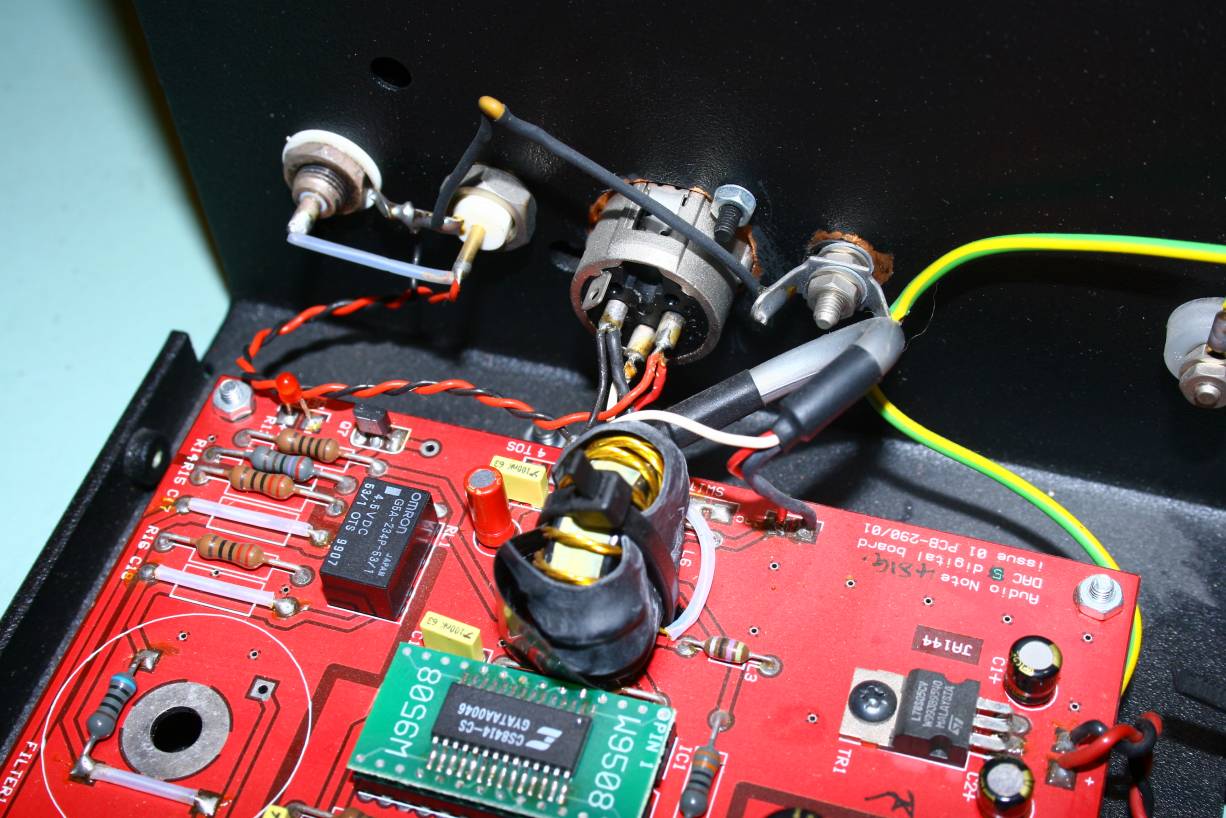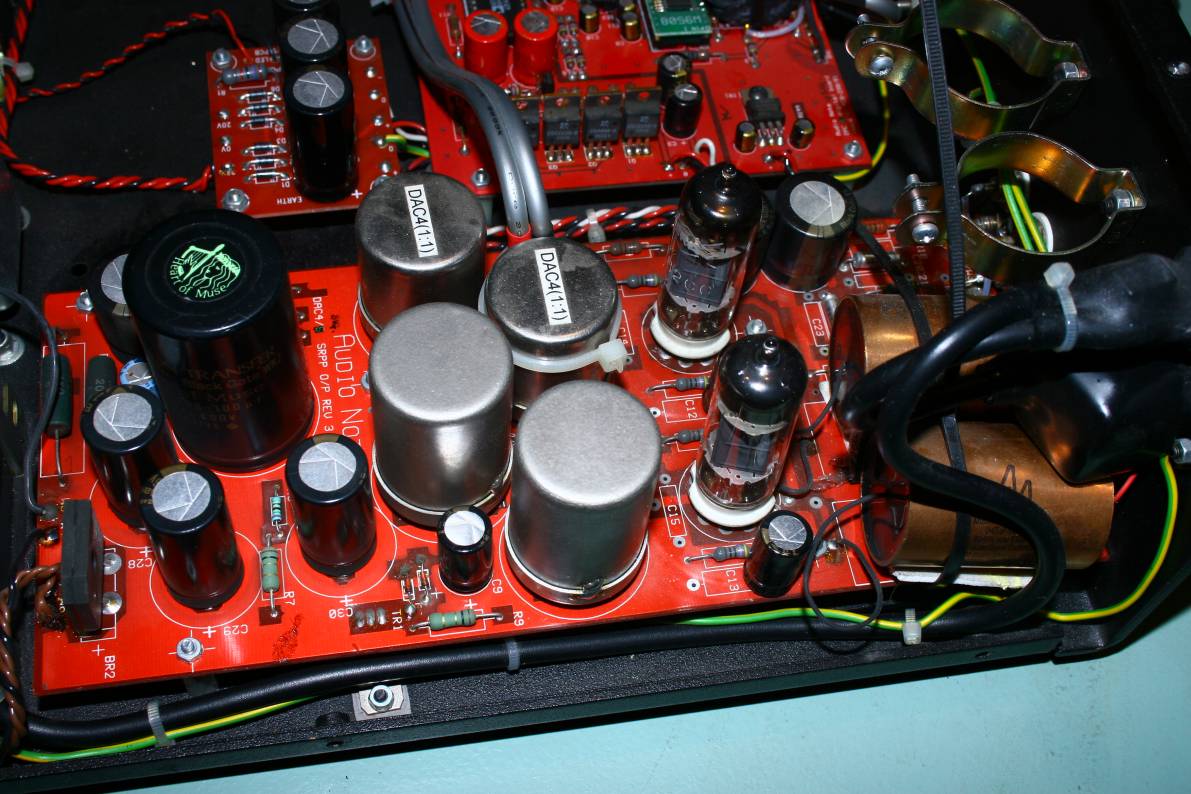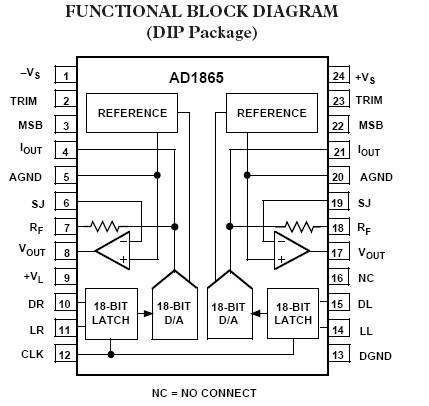Audio-Note
DAC- 4
What can I say.
One can not write about audio without running into the Audio-Note story
sooner or later.
What is special
about their unique marketing proposition is that they are the first
company which offered almost the same set of products on 5 different
price levels (VERY DIFFERENT PRICES) but made on the same schematics
just different parts.
So they made
people aware of part quality influence upon music.
For example
their first set of DAC boxes were identical schematics from DAC 1 to
DAC 4 where the price was going fourfold with each level.
That approach
enabled the users to buy the higher models as their situation
allowed, or just upgrade the parts. The whole distribution channel
which AN fully controlled was designed to support neverending upgrades.
That was an
invitation to TWEAKING backed by their policy of selling the parts as a
separate extra business.
I kind of
dig this story - it makes sense. Poor people can start on level 1
(or even at KIT level below the ONE) and enjoy really no nonsense
products, and the German dentists can have the best of the best.
Separate story
is the Kondo story - the inventor of A-N kept his Japanese business
separate from the Danish sorcerer Mr. Peter Qvortrup and the Japanese
toys became the ultimate lineup above the UK's numbered boxes. Starting
from Ongaku amp, through the silver IO cartridges, AN-VZ cables - till
the ultimate Kondo DAC. First they were called Audio-Note, later
renamed to
Kondo.
I must admit
that Mr. Kondo knew something about how good stereo should sound.
If I won the
lottery I would buy some of that stuff.

When the
opportunity appeared I went to listen and challenge the DAC4,5 at Kris'
house. He has a dedicated audio cellar so everything can be heard
very well there.

The famous red
PCB shows a custom toroid input transformer, followed by CS8414
receiver chip (like everyone else, like Lampucera for example). That is
connected via i2S to non oversampled unfiltered DAC Analog Devices
AD1865 (stereo) and that drives in I out mode the sowter transformers
connected to SRPP lampizator kind of output stage with E182CC supertube
(unique pinout, don't bother).
The DC is very
well regulated and the schematic is on the simple side.
The power
transformers are all EI (Audio Note hates toroids) and the black-gates
should be separately insured there is so many of these most expenceive
capacitors on earth in that DAC. It is a Signature variant, remember ?
The power
transformers seem at first look VERY overrated in size.
Nothing is
buzzing or humming, the construction is down to earth proper, without
this annoying PRETENSION to High End Looks (like MBL, Forsell,
Gryphon, Jadis, Wadia or Accuphase)
Absolutely
NOTHING in this extravagantly costly product is made to look good. Not
even the case. The case is not even better than in the chinese SATCH
dac.
Summing up. with
all the technical knowledge I have, that's how I would like to design a
DAC. Just simple, elegant, plain, spartan and musical. Not one part too
many or too little. Nothing to tweak or to replace.
But if this is
the NORMAL bread and butter - WHY IS IT SO RARE, UNCOMMON
APPROACH
? WHY IT HAS TO COST SO MUCH ? (Voice over: Mr. Fikus - it is
easy - lack of competition in the same segment plus people willingness
topay so much for good music)
I know the price
is decided on the positioning grid versus the SOUND of other products.
Compared to the whole ILL rest of the world - the sound of AN is in
fact worth that much.
How much? Well, the Danish pricelist quotes 30 000 USD per DAC4,1
signature, and 77 grands for DAC5.
I also know that
Peter likes good cars and he needs to make money but why isn't anyone
copying this approach to introiduce some competition to his idyllic
business case ?
The answer is -
because those who could copy this business modell don't have the
reputation and trust built in last 30 years by Kondo, Quvortrup and
theit pretorians - COUNTRY REPs. Their cult church which they
slowly built can not be duplicated in a shortcut. That's their
barrier to entry. You can't buy time. They are so well protected by the
barriers to entry that they give away all their schematics, nothing is
secret, and all the parts can be bought too.
There it is -
the real Mc Coy ready to resist my barbaric challenge with my stupid
Chinese dac married to my stupid Russky tubes.


When I counted
these blackgates I started sweating like a pig .....


Wow - they even
have installed AES-EBU input !!!!! Bravo !
AD-1865 datasheet
excerpts :
FEATURES
Dual Serial
Input, Voltage Output DACs
No External
Components Required
110 dB SNR,
0.003% THD+N
Operates at 16 3
Oversampling per Channel
Cophased Outputs
116 dB Channel
Separation
Pin Compatible
with AD1864
APPLICATIONS
Multichannel
Audio Applications
Compact Disc
Players
Multivoice
Keyboard Instruments
DAT Players and
Recorders
Digital Mixing
Consoles
Multimedia
Workstations
PRODUCT
DESCRIPTION
The AD1865 is a
complete, dual 18-bit DAC offering excellent THD+N and
SNR while requiring no external components. Two
complete signal
channels are included. This results in cophased voltage
or
current
output signals and eliminates the need for
output
demultiplexing circuitry. The monolithic AD1865 chip includes
CMOS logic elements, bipolar and MOS linear elements
and
laser-trimmed thin-film resistor elements, all fabricated on Analog
Devices’ ABCMOS process.
The DACs on the
AD1865 chip employ a partially segmented architecture.
The first four MSBs of each DAC are segmented
into 15
elements. The 14 LSBs are produced using standard R-2R
techniques. Segment and R-2R resistors are laser trimmed to provide
extremely low
total harmonic distortion. This architecture minimizes
errors at major code transitions resulting in low output
glitch and
eliminating the need for an external deglitcher. When used
in the current output mode, the AD1865 provides
two ±1 mA
output signals. Each channel is equipped with a high
performance output amplifier.
These amplifiers
achieve fast settling and high slew rate, producing
±3 V signals at load currents up to 8 mA. Each output
amplifier is
short-circuit protected and can withstand indefinite short
circuits to ground.
The AD1865 was
designed to balance two sets of opposing requirements,
channel separation and DAC matching. High channel
separation is
the result of careful layout. At the same time, both
channels of the AD1865 have been designed to ensure
matched gain and
linearity as well as tracking over time and
temperature. This assures optimum performance when used in
stereo and
multi-DAC per channel applications.
WOW! I am
speechless.
Anyway - looking
for the AD1865 DAC on the Vassily list - there is almost NONE !
WHAT ?
The DAC chip
that is supposed to be Worlds best was not used by anyone ?
Why?
How come?
Did they cease
it early ?
Did the plant
burn down? Was it struck by Kobe earthquake? Did they employ Enron
accountants ? Or GE human resources people?
Was it too
expenceive to make?
Was it wrong for
the market?
Anyone has any
info?
My wild wild
guess is that when this chip appeared, the DVD era started and the chip
became the last mastodont and quickly extinct.
Or wait a minute - maybe it was used by truckloads in the other devices
which they list - namely
Multichannel Audio Applications, Multivoice Keyboard
Instruments, DAT Players and
Recorders, Digital Mixing
Consoles, Multimedia
Workstations, etc ?
Anyway, the
closest I could get to the Audio-Note dac was the beautiful Romanian
ROCKNA DAC. I paid blindly 162 Euros and I decided to lampize it with
my own Sowters and SRPP E182CC which i have at hand.
THAT will be
interesting - won't it !? But that is the sory for another article.
Vassili list of
all other AD1865 machines
|
AUDIO NOTE CD-2
|
AD1865 – SM5843
|
KSS-210 / SOH-A1
|
|
AUDIO NOTE CD-2.1x
|
|
AUDIO NOTE CD-3
|
AD1865 – SM5843
|
SOH-A1
|
|
AUDIO NOTE CD-3.1x
|
AD1865N
|
|
WADIA 23
|
2 x AD1865N – XC3042A
|
Pioneer Stable Platter
|
|
WADIA 12
|
2 x AD1865
|
It’s a DAC
|
THATS
ALL. Two very small niche companies - Wadia and A-N - they surely were
not the reason Analog Devices put so much effort to produce this chip.
So what is the mistery ?
Did something happen ? Did Quvortrup buy the exclusivity off the AD
when he realised what gem he had ? It wouldnt surprize me at all.
Even AD1864 search (with which the 65 is compatible) - does not show
many players - again - three niche machines.

As you can see above, we have BOTH output types - I and U.
I is
the preferred one for DIY lampization.
In
this case - float 17, 18, 19, 8, 7 and 6 and use connection from 4 and
21
LISTENING
IMPRESSIONS
I was really
hoping that the TDA1541 will beat the AN DAC4. Well - not yet, Not this
time.
The system we
used was extremely revealing of differences.
All SE triode
system with all Audio-Note cabling even inside speakers - everything
was the best money can buy.
DAC 4 sounded
really best, it was like everything we love about the TDA sound but
with stronger attack (Sowters ?) more details (E182CC tubes) and over
all more halucynogenic soundscape (blackgates ?)
AN has the sound
to die for, period.
I am sure that
one day I will make a player as good as this, but who knows maybe the
only ticket to equalling AN sound will be .... to build AN clone. Maybe
who knows - this is a perfection - materialised ? Holy Shit, it may
well be.
also see this article of mine:
ROCKNA AD-Labs dac from Romania (AD1865)
AD1865 Clone NOS DAC from CHINA







